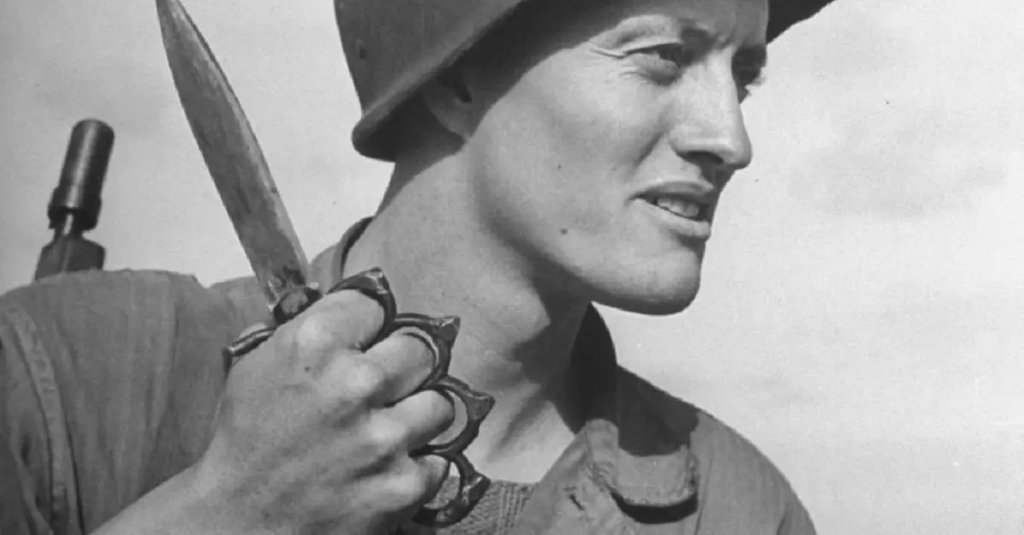Every issued weapon in military history was inspired by asking the same question: “How can we make our boys kill better?” Around the turn of the 20th century, one engineer answered that question with, “hold my beer” before rolling up their sleeves going on to invent the Mark 1 trench knife.
Knives, in one form or another, have been used in combat for as long as people have been sharpening things and, pretty soon after that, people have put metal guards on their blades to prevent their hands from getting sliced up while stabbing.
But it was during World War I when the fine folks at Henry Disston & Sons took a pair of brass knuckles and added a knife and a spiked pommel to it because… f*ck it. Why not?

(Signal Corps Archives)
Fighting in the trenches of WWI was brutal. During the day, opposing fortifications hurled shots at one another and No Man’s Land, the space between opposing trenches, was a hellscape under constant barrage by artillery fire. So, any kind of advance was likely done under cover of night.
Once raiders made it into the enemy line, they would need to keep quiet for as long as possible as to not give away their position, alerting more than just an enemy sentry. They needed something both quiet and lethal to get the job done. Bayonets were plenty, but the trenches were way too narrow to properly utilize what is, essentially, a long spear. This is where detachable bayonet knives came into play.

By the time the Americans arrived in WWI, the American Expeditionary Forces decided to adapt the M1917 trench knife. It wouldn’t have the signature knuckleduster just yet, but it did sport spikes where they’d eventually go. The knife also had the infamous triangular tip that was hell for a medic to suture (and would probably be illegal today under the Geneva Convention’s rule against “unnecessary suffering”).
The blade was extremely flimsy and it was meant exclusively for stabbing. This was (mostly) improved with the introduction of the M1918 trench knife that everyone knows and loves today. This new version sported proper brass knuckles and a dual-sided blade. Unlike the earlier knife, the M1918 could be used for both slashing and thrusting. This knife was upgraded once again, using a more durable steel that was less likely to snap the first time it struck a German, and it was dubbed the the Mark I Trench Knife.

(United States Army)
The spikes weren’t just for punching people, despite what you’ve seen in movies. They were designed more to prevent anyone from simply taking the knife out of your hand.
Finally, there’s the never-manufactured, but still-patented trench knife called the Hughes Trench Knife. Take all of the lethal features of previous designs and then turn it into a spring-loaded switchblade. You can see why it never made it past the design phase.
Trench knives lived on through WWII, were issued sparingly in the Korean War, and again in the tunnels of Vietnam — today, they’re are only sought after by collectors.


